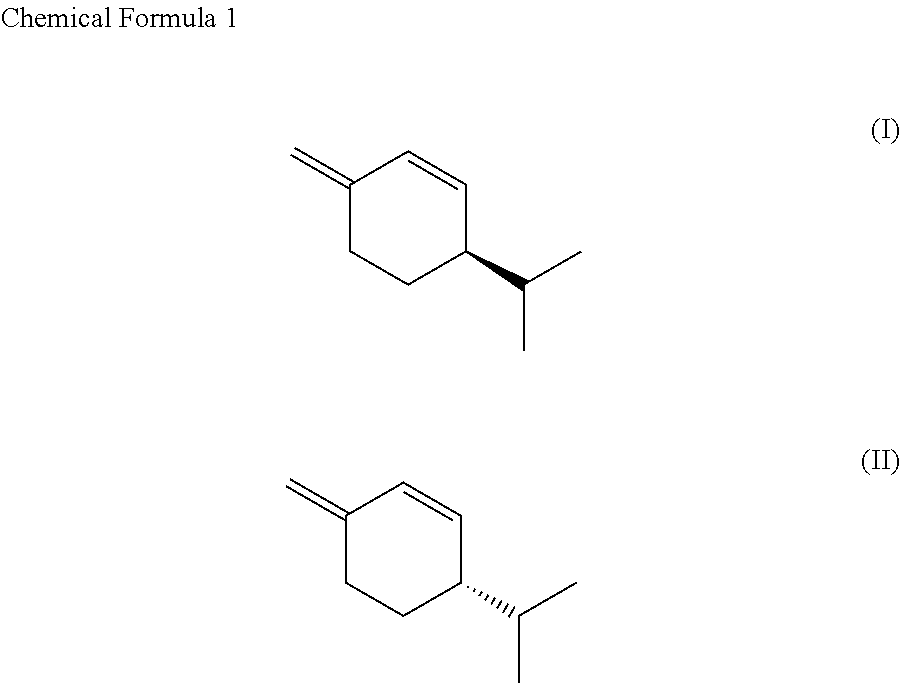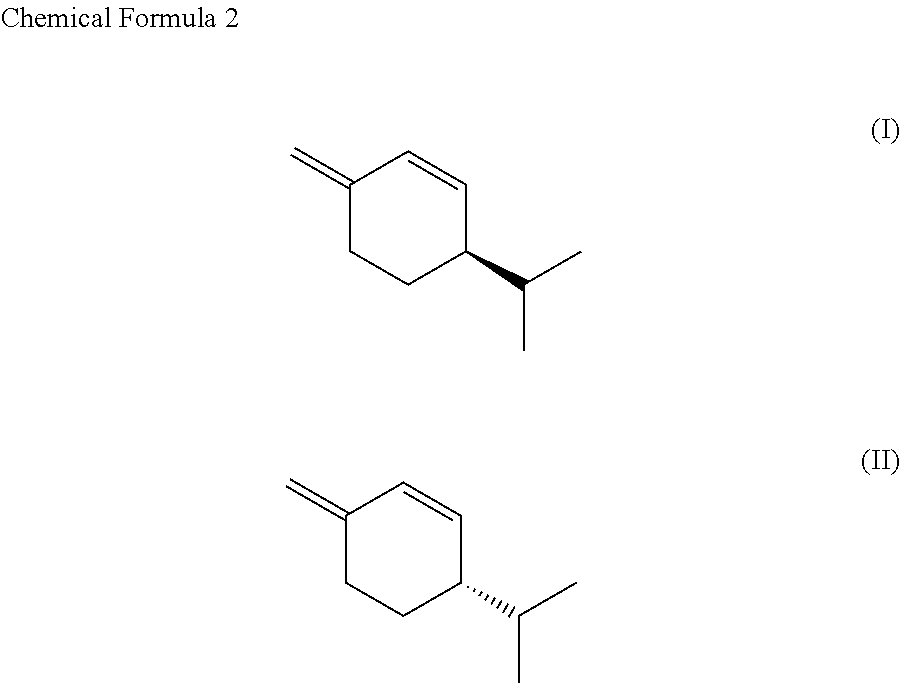SS-phellandrene polymer, production method for same, and molded article
- Summary
- Abstract
- Description
- Claims
- Application Information
AI Technical Summary
Benefits of technology
Problems solved by technology
Method used
Image
Examples
example 1
Production of β-Phellandrene Polymer
[0127]78.6 ml of toluene (manufactured by Kanto Chemical Co., Inc.) was poured into a dried 300 ml glass flask and cooled to 0° C. Thereto was added, as a Lewis acid catalyst, EtAlCl2 (ethylaluminum dichloride) (17% hexane solution, about 1 mol / L, manufactured by Tokyo Chemical Industry Co., Ltd.) in an amount corresponding to 7.3 parts by mass (0.035 ml) relative to 100 parts by mass of the β-phellandrene as a monomer. The added matters were dispersed well in the resultant, to which 6.0 ml (5.1g) of β-phellandrene (purity 83.3% by mass) prepared by chemical synthesis was slowly added dropwise. After one minute, the reaction was terminated by the addition of 10 ml of methanol. The reaction solution was transferred to a separatory funnel, followed by addition of 20 ml of 1% sodium hydroxide solution. The resulting was stirred well, whereafter the aqueous phase was separated away therefrom. Then, the organic solvent phase was slowly evaporated off b...
example 2
[0131]A β-phellandrene polymer was obtained under the same conditions as in Example 1 except that the reaction temperature was changed to −40° C. and the reaction time was changed to 5 minutes. The conversion of the monomer in the reaction was 100%, and the obtained polymer had a number average molecular weight of 40,000 and a glass transition temperature of 82° C.
[0132]Furthermore, the polymer obtained by hydrogenation carried out in the same manner as Example 1 had a hydrogenation ratio of 99.9%, a number average molecular weight of 39,500, a glass transition temperature of 125° C., and a total light transmittance of 93%.
example 3
[0133]A β-phellandrene polymer was obtained under the same conditions as in Example 1 except that the reaction time was changed to 10 sec. The conversion of the monomer in the reaction was 88%, and the obtained polymer had a number average molecular weight of 33,800 and a glass transition temperature of 82° C.
[0134]Furthermore, the polymer obtained by hydrogenation carried out in the same manner as Example 1 had a hydrogenation ratio of 99.9%, a number average molecular weight of 33,500, a glass transition temperature of 125° C., and a total light transmittance of 93%.
PUM
| Property | Measurement | Unit |
|---|---|---|
| Temperature | aaaaa | aaaaa |
| Temperature | aaaaa | aaaaa |
| Percent by mass | aaaaa | aaaaa |
Abstract
Description
Claims
Application Information
 Login to View More
Login to View More - R&D
- Intellectual Property
- Life Sciences
- Materials
- Tech Scout
- Unparalleled Data Quality
- Higher Quality Content
- 60% Fewer Hallucinations
Browse by: Latest US Patents, China's latest patents, Technical Efficacy Thesaurus, Application Domain, Technology Topic, Popular Technical Reports.
© 2025 PatSnap. All rights reserved.Legal|Privacy policy|Modern Slavery Act Transparency Statement|Sitemap|About US| Contact US: help@patsnap.com



